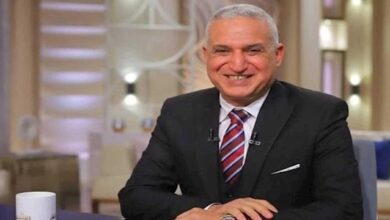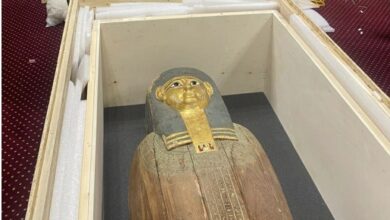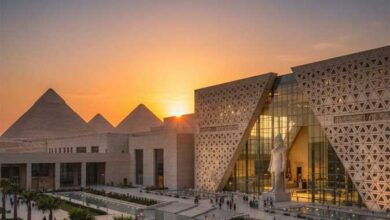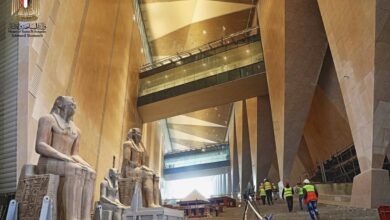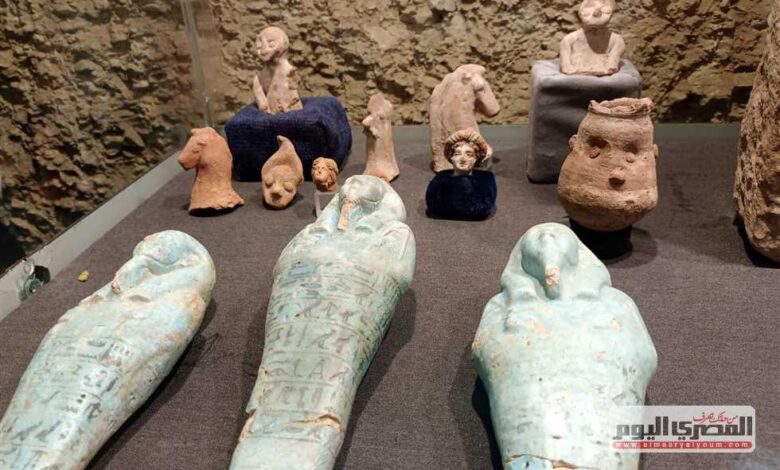
Egyptian archaeologist Zahi Hawass, the head of the joint archaeological mission affiliated with the Zahi Hawass Center for Archaeology and Heritage has announced several new archaeological discoveries in cooperation with the Supreme Council of Antiquities and the Ministry of Tourism and Antiquities.
Across three years of research and scientific excavations which began in September 2022, Hawass confirmed that the mission has been able to achieve a number of important archaeological discoveries in the area located at the beginning of the ascending path to the temple of Queen Hatshepsut at Deir el-Bahri.
The mission uncovered a part of the foundations of the valley temple that was located at the edge of the valley.
This is the main entrance to the queen’s mortuary temple, known as “Djeser-Djeseru,” widely considered one of the most beautiful Pharaonic temples.
Hawass indicated that the mission found a large number of inscriptions from the valley temple, which are among the rarest and most beautiful examples of the sculptures made during the time of Queen Hatshepsut and Thutmose III.
There are only a few similar examples in Egyptian museums, such as those in the Luxor and Metropolitan museums.
The newly discovered collection of royal inscriptions is the most complete from the remains of the valley temple, which was destroyed during the Ramesside period and the 19th dynasty.
The Secretary-General of the Supreme Council of Antiquities, Mohamed Ismail Khaled, said that the mission found more than 100 stone slabs of limestone and sandstone inscribed with the names and cartouches of Queen Hatshepsut (birth name and coronation name on the throne).
These are part of the foundation deposits that confirm the ownership of the temple by the queen and are known as “Stone Names”.
Among these stone slabs is a unique limestone slab bearing the carved name and title of Queen Hatshepsut’s architect, Senenmut, with the title of “Overseer of the Palace”.
This complete set of foundation deposits for Queen Hatshepsut is one of the most important discoveries of the mission and comes after nearly a century since the American archaeologist Herbert Winlock discovered foundation deposits for Queen Hatshepsut at the site of the mortuary temple (1923-1931).
Hawass announced that the archaeological mission has uncovered a number of rock-cut tombs dating back to the Middle Kingdom (2050-1710 BC) at Deir el-Bahri.
The mission has also revealed the chronological sequence of the site, which was first occupied during the Middle Kingdom and continued until the beginning of the 18th Dynasty when the royal architect Senenmut ordered the cessation of burials in the area and chose it as a site to build the valley temple and part of the ascending path connecting the valley temple to the mortuary temple.
Senenmut buried this cemetery under large amounts of sand as part of the preparations for the construction of the valley temple.
Hawass added that the mission found a number of rock-cut tombs dating back to the Middle Kingdom, containing important artifacts such as pottery offering tables with figurines of bread, wine, and the head and leg of a bull, which are distinctive examples of artifacts from the Middle Kingdom.
He explained that a number of burial shafts from the 17th Dynasty (1580-1550 BC) were also discovered, carved into the rock. Inside these shafts, wooden humanoid “basket coffins” characteristic of the 17th Dynasty were found.
Among the most important of these coffins is a sealed coffin of a small child, still in its original state after 3600 years.
Alongside these coffins, a rolled mat was found in its original condition. The mission is currently working on a special program to restore it and display it at the Museum of Civilization.
The Egyptian mission also transferred one of its most important discoveries, a bed made of wood and woven reeds, to the Museum of Civilization during the last excavation season 2023-2024.
This bed dates back to the same period and belonged to one of the guards of the cemetery, as it was found in a small room designated for the guards’ living quarters.
Hawass noted that the discovery of war bows is another major find of this mission, indicating the occupation of the tomb owners and their military background, as well as their struggle to liberate Egypt from the Hyksos.
The tomb of Khuty Mes, the overseer of the palace of Queen Tetisheri, the great-grandmother of the 18th Dynasty kings and known as the golden age of ancient Egyptian civilization, was also discovered.
The mission uncovered the tomb of the overseer of the palace of Queen Tetisheri, the grandmother of King Ahmose, the liberator of Egypt from the Hyksos and the mother of his father, King Seqenenre Taa II, the first martyr in the war of liberation against the Hyksos.
This major find helps sheds light on this important period of Egyptian history, for which not many artifacts have been found.
The tomb is dated to the ninth year of the reign of King Ahmose I (1550-1525 BC), as confirmed by the date written on the funerary stela of Khuty Mes found in the tomb.
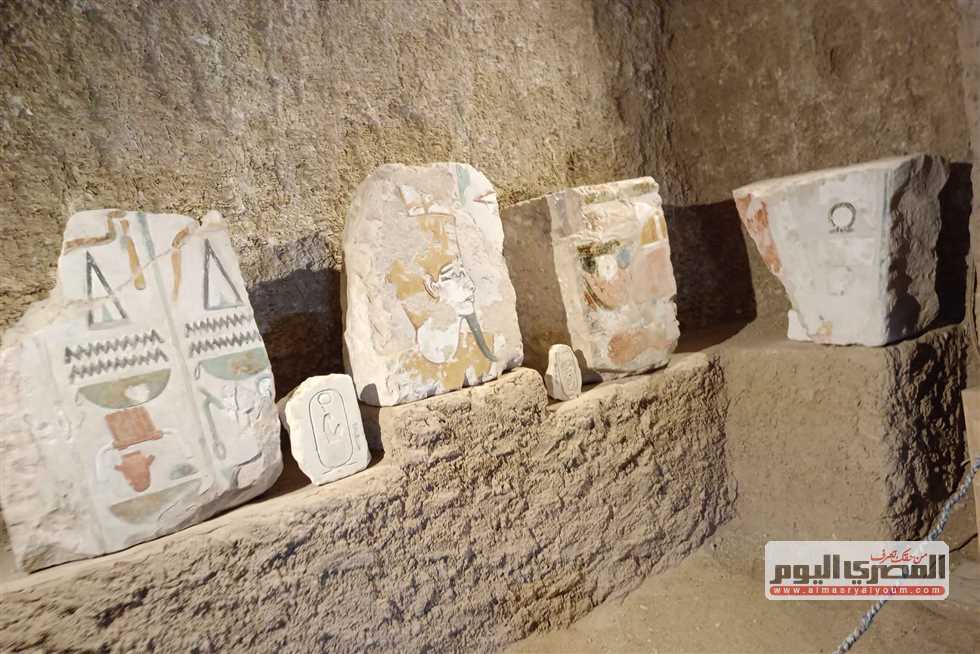
Tomb layout
The tomb has a simple layout, consisting of a square chamber carved into the rock, preceded by a mud-brick enclosure coated with a layer of white plaster and having a vaulted ceiling.
Inside the tomb chamber, remnants of red-colored paintings were found on a layer of white plaster.
Within the floor of the chamber, a rectangular shaft was found leading to two burial chambers, inside of which was a limestone offering table as well as the funerary stela of the tomb owner, Khuty Mes.
Despite the important title held by the tomb owner as the overseer of the palace of Queen Tetisheri, one of the most important and powerful queens in ancient Egyptian history, the appearance and simplicity of the tomb provide a great deal of economic information about the early 18th Dynasty, which came after bitter wars of liberation that drained the state’s economy.
Hawass confirmed that a part of an extensive Ptolemaic necropolis was discovered, occupying the site of the ascending path and the valley temple. Its tombs were built of mud-bricks and parts of the stones of Queen Hatshepsut’s temple.
Some parts of this necropolis had been discovered by foreign missions in the early 20th century but were not properly documented.
The Egyptian mission also uncovered a large number of artifacts from that period, including bronze coins bearing the image of Alexander the Great and dating back to the era of Ptolemy I (367-283 BC).
Children’s toys made of terracotta (fired clay) were also found, in the shapes of humans and animals, as well as a number of pieces of cartonnage and funerary masks that covered mummies, and a large number of winged scarabs, beads, and funerary amulets.
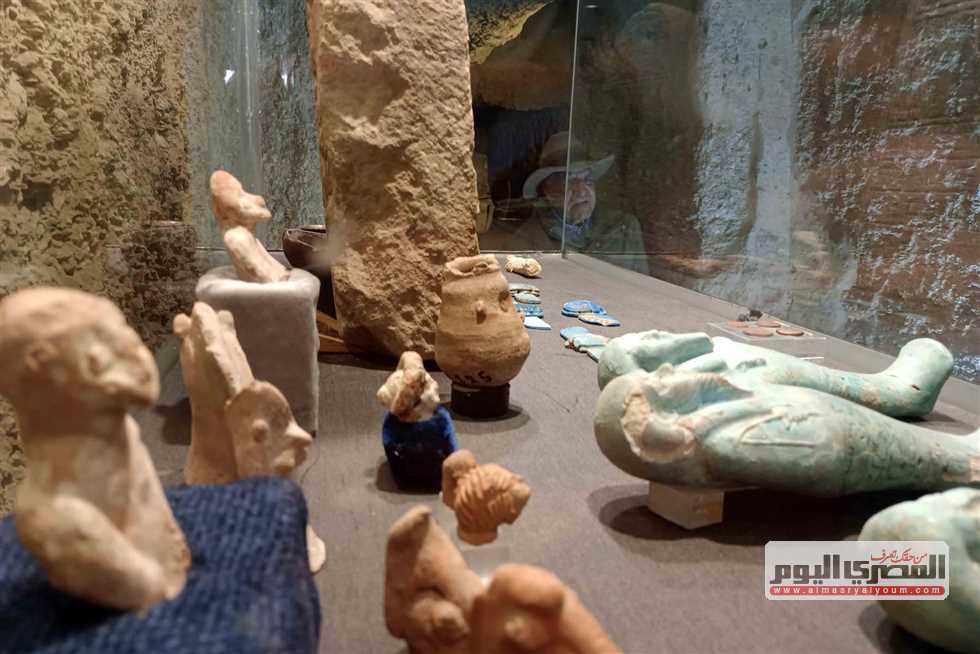
Edited translation from Al-Masry Al-Youm

